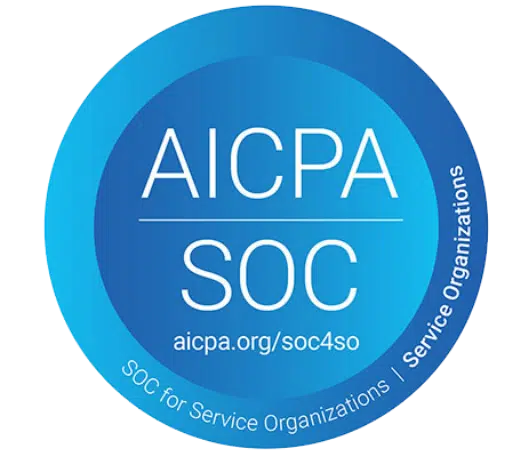What is ESG?
ESG (environmental, social, and governance) is a term used to represent an organization’s corporate interests that focus on sustainability, environmental issues, and ethical impacts. Stakeholders use ESG reporting to evaluate organizations and determine future financial and operational performance.

What is an ESG Framework?
ESG frameworks provide a structure to contextualize information regarding ESG commitments. They also advise how to create ESG reports. ESG frameworks were developed to standardize the process of ESG reporting. Currently, there are a number of independent reporting frameworks, with plans to collaborate for one global standard in the future.
An ESG assessment framework is pivotal in evaluating a company’s performance against predefined ESG criteria. It comprehensively analyzes environmental impact, social responsibility, and governance practices. By utilizing key performance indicators (KPIs), organizations quantitatively measure their ESG efforts and identify areas for improvement.
ESG frameworks offer insight into:
- Metrics to assess a company’s ESG performance
- How to structure your ESG report in terms of content
- Formation of ESG policies and processes
Examples of ESG Standards and Frameworks:
The landscape of ESG standards and frameworks is diverse, reflecting the multifaceted nature of sustainable business practices. Notable examples include the Global Reporting Initiative (GRI), Sustainability Accounting Standards Board (SASB), and Task Force on Climate-related Financial Disclosures (TCFD). Each framework has its unique focus, ranging from specific industry standards to broader, more comprehensive guidelines. Companies often align with multiple frameworks to ensure a holistic approach to ESG reporting.
What is a Voluntary ESG Framework?
Voluntary ESG frameworks are not mandated by regulatory bodies but are embraced voluntarily by organizations seeking to enhance transparency, accountability, and a commitment to sustainable and ethical business conduct.
Voluntary ESG frameworks provide companies with a strategic tool to measure, report, and assess their performance in key ESG areas. In addition, the voluntary nature of these frameworks allows companies the flexibility to tailor their reporting strategies according to their specific industry, business model, and long-term goals. This flexibility is particularly important as it empowers companies to align with multiple reporting frameworks concurrently, providing a more nuanced and comprehensive view of their sustainability efforts.
Widely recognized ESG reporting frameworks like the Global Reporting Initiative (GRI), Sustainability Accounting Standards Board (SASB), and Task Force on Climate-related Financial Disclosures (TCFD) are examples of voluntary frameworks that companies choose to adopt for transparent reporting on their ESG practices.
Are ESG Standards and Frameworks the Same?
In short, no. Whereas ESG frameworks represent a conceptual frame of guidance and best practices to follow, ESG standards contain specific and detailed criteria of exactly what should be reported on each topic. A framework defines the direction, provides guidance, and shapes people’s thoughts, but falls short of a defined reporting obligation. Especially in highly regulated industries where there is a greater emphasis on ESG, like the oil or gas market, for example, ESG standards are stricter and more regulatory than ESG frameworks.
Well-known ESG Reporting Frameworks
- Climate Disclosure Standards Board (CDSB)
- Science Based Targets initiative (SBTi)
- Task Force on Climate-related Financial Disclosures (TCFD)
- UN Principles for Responsible Investment (PRI)
- World Economic Forum (WEF) Stakeholder Capitalism Metrics
- Carbon Disclosure Project (CDP)
Well-known ESG Standards
- Global Reporting Initiative (GRI)
- Sustainability Accounting Standards Board (SASB)
Start Getting Value With
Centraleyes for Free
See for yourself how the Centraleyes platform exceeds anything an old GRC
system does and eliminates the need for manual processes and spreadsheets
to give you immediate value and run a full risk assessment in less than 30 days
The Importance of ESG Frameworks
The value of ESG frameworks lies in their ability to help companies positively impact the world. Today, ESG has become a value driver, and although standards are usually not regulated by law, they are shaping sustainable corporate policies around the world.
ESG reporting has shown to have many benefits:
- Cost reduction
Strong ESG policies can help companies reduce waste, water, and energy consumption. They also drive more strategic resource allocation.
- Investment optimization
Investors are increasingly considering ESG as an essential aspect of the investment process. ESG enhances investments by allocating capital and planning for the long term, instead of focusing on quarterly or annual growth.
- Business growth
ESG standards significantly impact long-term growth and sustainability. Companies with robust ESG propositions forge stronger community and government relations, giving them an edge in corporate growth.
- Customer satisfaction
Consumers are putting more pressure on companies to be more environmentally and socially responsible.
- Talent attraction
Companies that embrace ESG concepts tend to attract top talent and contribute to employee productivity through social credibility.
- Regulatory compliance
Adopting ESG compliance frameworks in your organization helps identify risks and opportunities, maintain regulatory compliance, and avoid legal action
- Competitive advantage
Most businesses participate in ESG reporting, so a lack of participation may cause some to risk falling behind the competition.
- Supply chain opportunities
Developing procurement and supply chain management strategies that focus on environmental issues is a surefire way to enhance business productivity and improve sustainability.
The Problem with ESG Frameworks
As more U.S. companies publish sustainability reports and other ESG disclosures, investors have expressed concern that the lack of a standardized ESG framework makes it difficult to evaluate and compare companies’ ESG practices. This lack of conformity reduces the value of such disclosures.
ESG assessment frameworks were developed independently of each other, with each framework focusing on different topics, and many of them overlapping. The result is a somewhat confusing landscape. Duff & Phelps, A Kroll Business research discovered that a lack of a standardized and recognized measurement system is the biggest threat to effective ESG disclosures for businesses.
Andrew Probert of Duff and Phelps said, “… Of the frameworks available, all of which are currently voluntary guidelines, none give a comprehensive overview for ESG reporting, meaning many firms use more than one. With no consistent approach for reporting between firms, it is challenging for stakeholders to compare opportunities fairly and effectively.”
The recent backlash on lack of standardization is a sign that ESG is evolving, with stakeholders trying to define a more consistent, tangible method of measuring ESG scores. Proactive leaders are using the critique of current ESG techniques to rethink strategies to create more value and impact.
Centraleyes ESG Solution
The Centraleyes ESG assessment is built from the key topics and common areas across all the standards and frameworks. Centraleyes allows companies to identify relevant environmental and social issues, determine their position for each, and generate an ESG report showing the company’s ESG posture. We’ve developed an automated ESG process using pre-loaded frameworks to guide you through a comprehensive risk assessment and towards high ESG ratings.
We are ready to help you achieve your ESG goals.
Start Getting Value With
Centraleyes for Free
See for yourself how the Centraleyes platform exceeds anything an old GRC
system does and eliminates the need for manual processes and spreadsheets
to give you immediate value and run a full risk assessment in less than 30 days





